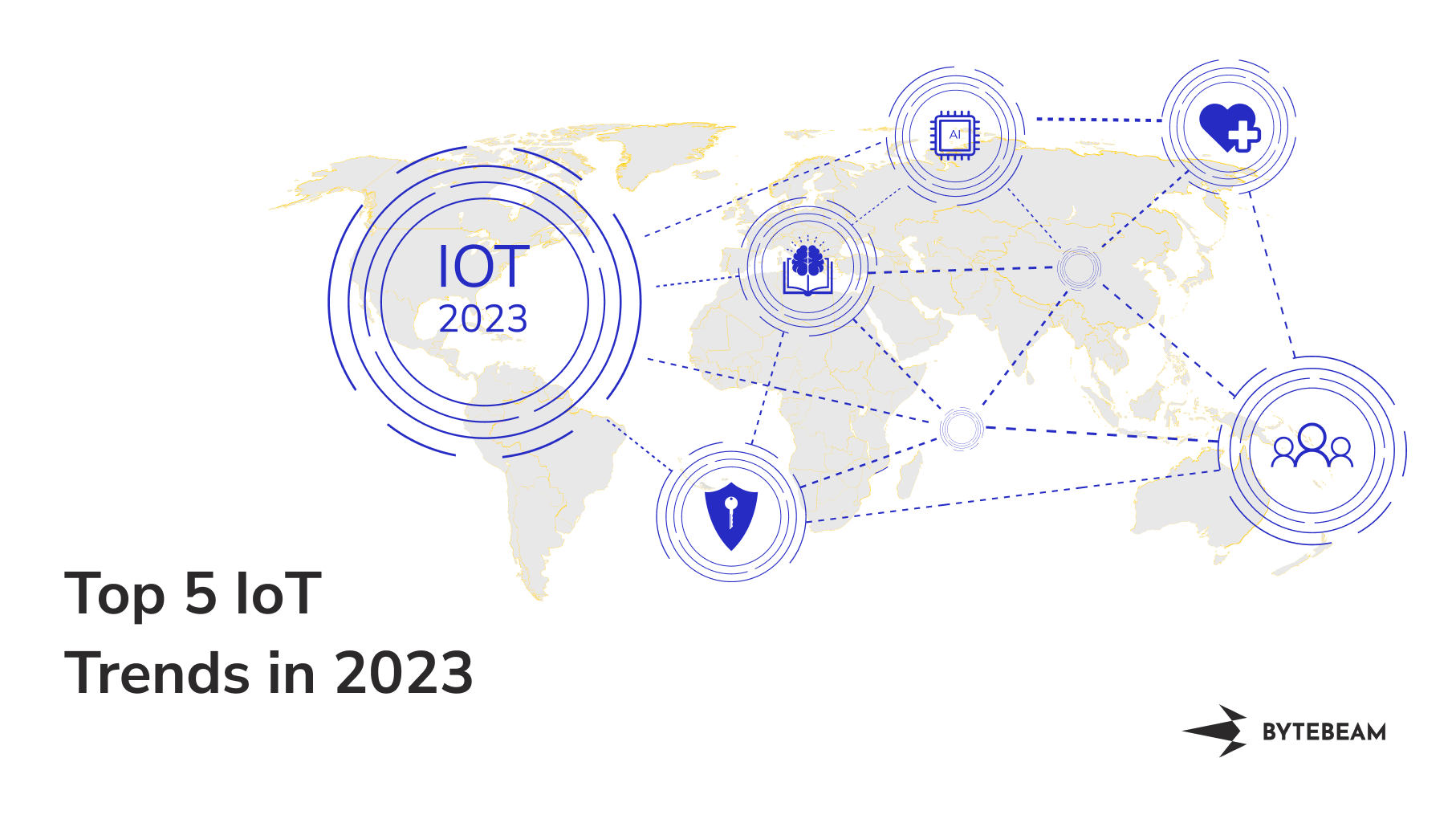Top 5 IoT Trends to look out for in 2024

It’s that time of the year again when you are bombarded with the speculations of technology trends! In order to only inform and educate, we have decided to keep it down to 5 trends that are emerging most strongly.
But why should you care?
Firstly, staying informed about the latest trends can help you identify new opportunities and make better decisions about investments and strategies.
Secondly, technology can be a major source of innovation and growth for businesses, and staying up-to-date with the latest trends can help you stay ahead of the curve and continue to innovate.
And finally, technology is also playing an increasingly important role in the way that businesses operate and interact with customers, and staying informed about trends can help you ensure that you are using technology effectively and efficiently.
So without further ado, let’s dive into it.
IoT Security: much more than just encryption
There are a whopping 15.14 billion IoT devices across the world in 2023! That’s almost twice as many as the number of people. Most of these IoT devices are not regulated in any way, which means that the security is negligible on these devices.
So why do we think that IoT security is an emerging trend?
Numbers.
The endpoint security market is expected to grow by over USD 18 billion by 2024. The reason for this estimate is that as IoT devices become more mainstream, regulations on the technology are becoming more common. This will increase the necessity for security solutions. But not just add-on security. The IoT security market is heading towards security as a default.
New protocols like Matter are making security a prerequisite right from the manufacturing stage. Secure shell, encrypted connectivity, and security standards are some of the most looked-for features in IoT platforms.
While we are an optimistic bunch, the numbers validate our belief that IoT security, with an emphasis on endpoint security, is going to be a big trend across 2024.
Standardization and Governance
Clearly so far, governments across the world had forgotten about the implications of IoT. But they are now waking to the concept that IoT collects, stores, transfers, and processes a colossal amount of data every single second. As a response, the EU came up with the Cyber Resilience Act, 2022. This act specifically focuses on digital products which include IoT devices. It also details the exact security measures that service providers and device manufacturers need to take.
As with GDPR, the CRA is also expected to set the standards for cybersecurity worldwide. Other governments are expected to follow suit in the coming year and lay down their own regulations for IoT. If you wish to read more about the CRA, check out our explainer here.
Open-sourced solutions
Open-source communities are the backbone of the internet. With software development in general, open-sourced solutions have always been in trend. But as IoT becomes more accessible, open-sourced solutions are becoming more common.
Our resident expert on all things technical and open source, Ravi Teja, believes that the transparency that comes with open source is a big step towards improving user trust, as well as security.
Healthcare innovations
The sudden onset of the pandemic, coupled with technological innovations, catapulted healthcare into a new era. Telehealth, along with healthcare-supportive IoT devices has given birth to the industry which is now dubbed as the Internet of Medical Things (IoMT). IoMT is expected to be a USD 350 billion industry by 2027, and the adoption rates so far are in agreement.
McKinsey has found that post the pandemic, telehealth visits have grown over 38x, and this data is only till 2021.
Devices like glucometers, health monitors, pedometers, oxymeters, etc. are now household, and being used to monitor health on a daily basis. With the right supporting infrastructure, healthcare can see a massive revolution in the way patient health is dealt with. IoT not only has the means to make healthcare more effective, but also a lot more accessible for everyone.
AI, ML, Big Data, and IoT: a tech party
Another trend in the evolution of the IoT is the increasing use of artificial intelligence (AI) and machine learning in IoT applications. As more data is collected from IoT devices, AI and machine learning algorithms can be used to analyze and process this data in real-time, enabling more intelligent and responsive IoT systems. This could lead to the development of new IoT applications and services that are able to make decisions and take actions based on the data they collect.
Applications of this tech cocktail are already being used by multiple industries. Drones for cleaning ocean trash, smart cameras to detect early signs of dementia, and androids for smart factories are just of the cooler applications of IoT coupled with other technologies.
Overall, the evolution of the IoT is likely to be driven by a combination of technological advances, market demand, and regulatory changes. As the IoT continues to grow and evolve, it will likely have a major impact on a wide range of industries and sectors, potentially transforming the way we live and work.

